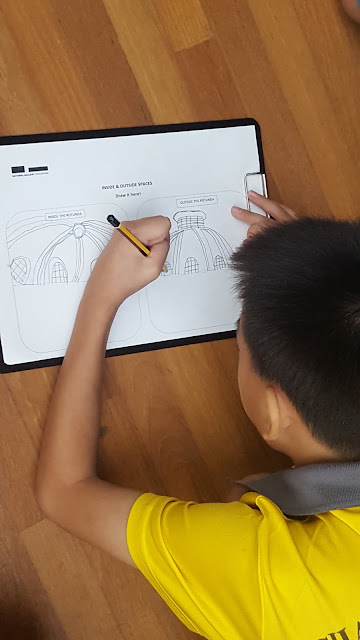Green School has a mantra of Learning By Doing. Thus, their professional development for teachers hold the same belief. I enjoyed myself a lot as I learn at the same time. I wasn't made to feel like the presenters/ facilitators were just clocking hours. Each of them take pride in what they do and inspire us to do the same. From the food put on the table to the activities that we engaged in, there was attention to the details. As a visual learner, let me flood this post with photos:
We gather at our accommodation in a beautiful bamboo lodge upon arrival. It was easygoing on the first day as we were getting to know each other. The interns were in charge of the ice breakers and before we know it, it was lunch!
Our first stop after lunch was Kembali, a recycling centre where the community can bring in items for recycling and the proceeds goes to the scholarship for local students. Those who contribute 5kg worth of recyclables can attend free English classes after the curriculum hours in GS.
 |
Instead of naming the Administration Block in a school as it is, here, it is known as The Heart of School. The high school art teacher, Jason, giving us our first classroom observation.
It was full moon when we went to visit Puri Ngurah. We were told the King will meet us here. I was naturally excited and keeping a lookout for the King. To my surprise, he was standing there right in front of me! We were welcomed by Agung Alit and her grandfather, Gusti Ngurah Agung Watusila, the King of Sibang Kaja and we listened to his story about Puri Ngurah. We were also welcomed with the traditional and trash monster dance performed by Kul Kul Connection students. Canang was used as an offering before the Purnama Ceremony at the Puri Ngurah.
Throughout the course, we interacted with many speakers from the school. I think the most captivating speaker is Chris Thompson as he spoke from personal experience without using any slides. As a visual learner myself, if he can capture my attention and makes sense of what he says whenever he speaks, I guess he must be a really great speaker. Plus, he wasn't an animated speaker which helps because it would be a distraction. I observed that he usually start with a short story or an object that will gradually lead to his point.
On the second day, we had to frame a challenge, discuss with our group and pitch our idea a few times in different places. The difficult part is managing everyone's idea as our group is SO diverse and everyone had a really short time to get to know each other. Sometimes I was trying so hard just to understand what others were talking about. It would be a next level to convince others of my perspective.
Mud wrestling is a rite of passage for GEC participants. It was super fun because we got excuse to be very dirty (literally!) and it was multi sensory. The instructors told us not to think of mud as 'dirty' as it is a growing medium for rice which provide us nourishment.
That's all folks!


















































